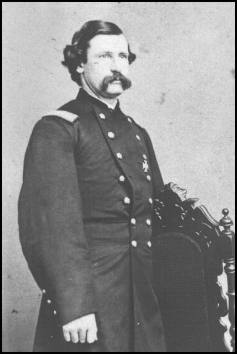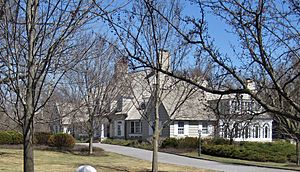Martin Davis Hardin facts for kids
Quick facts for kids
Martin Davis Hardin
|
|
|---|---|
 |
|
| Born | June 26, 1837 Jacksonville, Illinois |
| Died | December 12, 1923 (aged 86) St. Augustine, Florida |
| Place of burial |
St. Augustine National Cemetery, Saint Augustine, Florida
|
| Allegiance | United States of America Union |
| Service/ |
United States Army Union Army |
| Years of service | 1859 - 1870 |
| Rank | |
| Battles/wars | American Civil War |
Martin Davis Hardin (born June 26, 1837 – died December 12, 1923) was an important general in the Union Army during the American Civil War. He became a brigadier general on July 6, 1864. This rank was confirmed by the U.S. Senate just a few days earlier, on July 2, 1864.
Early Life and Learning
Martin Hardin was born in Jacksonville, Illinois. His father was John J. Hardin. Martin was a close friend and mentee of Abraham Lincoln, who later became president. Although some stories say Lincoln met his future wife, Mary Todd, at the Hardin family home, this is probably not true. They most likely met in Springfield.
Hardin graduated from West Point in 1859. Soon after, he worked as an aide to Robert E. Lee. This was during the time of the hanging of John Brown, a famous abolitionist.
Serving in the Army
Hardin served as a colonel in the 12th Pennsylvania Reserve Regiment. During the Mine Run Campaign, he was seriously injured and lost his left arm. Even after this injury, he bravely continued to serve in the army.
He left the volunteer service in June 1864. However, he returned to active duty on July 2, when he was appointed as a brigadier general. General Hardin led a division in the XXII Corps during the battle of Fort Stevens.
Life After the War
After leaving the army in December 1870, Martin Hardin became a lawyer in Chicago. He also had a winter home in St. Augustine, Florida. His second wife, Amelia McLaughlin, was the sister-in-law of Irene Castle, a well-known dancer.
Hardin spent his final years in a famous house in St. Augustine, Florida. This house was known as the "Union Generals' House." He was one of the last surviving generals from the Civil War when he passed away in 1923. He is buried with his wife at the U.S. National Cemetery in St. Augustine. His widow honored him by building a chapel in St. Augustine.


